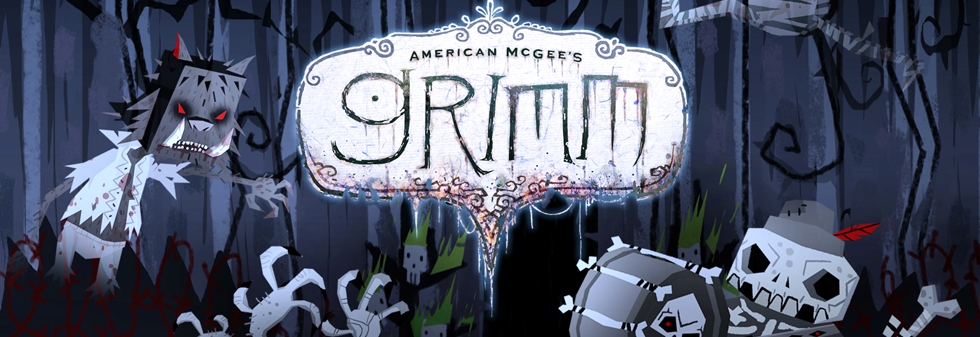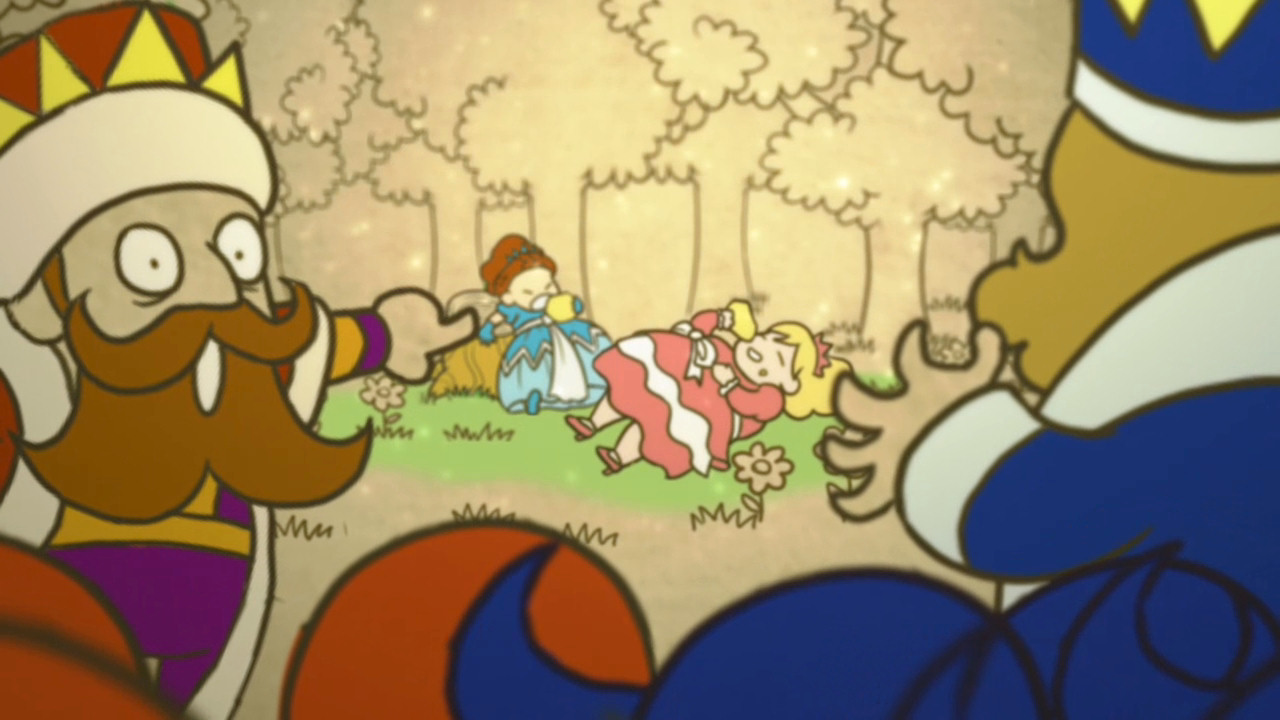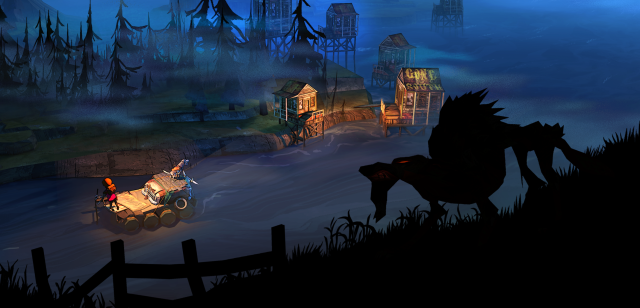Envision yourself shut up in a security office. A flock of murderous animatronics stalk the corridors. Above, you hear the rattling of the vents. One may be inside. There’s no one around to help you. Is it a trick of the mind or are you in danger? What do you do?
The first Five Nights at Freddy’s game lured me in with its compelling mythos and eerie environment. Freddy Fazbear’s Pizza is comparable to Chuck E. Cheese, a pizzeria that saw its heyday in the 1990s. For me, this game is the perfect marriage of 90s nostalgia and horror. The group of nightmarish animal animatronics that populated the cast of the original Five Nights have been reduced to phantoms; in this latest installment, the player, a bodiless security guard, faces off with a single figure roaming the halls. Players must survive five nights of horror to win, and outsmarting an animatronic rabbit named Springtrap is easier said than done.
Having played the other games, I’m familiar with the overall gist of the game mechanics. The player can only swivel left and right. The defenseless protagonist motif is common in horror. In the first two installments the player controls the security camera, doors, lights, and so on. However, the third game differs in that there’s no power level. The player can now toggle the security camera without worrying it’ll consume too much energy. It’s a colossal improvement for me because I’m extraordinarily unskilled at monitoring my own power level. In other words, I’d screw myself over time and time again. Also, there’s another new game mechanic I’d like to touch on.
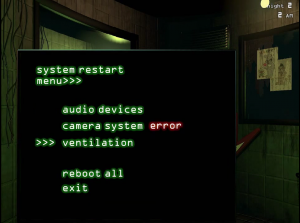 The player now controls the camera, audio, and ventilation functions. Springtrap, quite possibly the biggest troll of all time, persistently shuts down these systems in an attempt to torment and incapacitate the player. The ventilation system, when powered down, is especially problematic because if the air is cut off, the player experiences an array of disturbing hallucinations. A barrage of phantom monsters will distract and or torture the player. It takes a good amount of time to reboot these systems too, during which the player is unable to exit the screen until the reboot finishes. It’s extremely tense because Springtrap flutters about when the player is distracted by one of the two screens. It’s essentially giving Springtrap a chance to get up close and personal with a player that’s restricted to shifting from side to side. I’m not a habitual nail biter but even I was chewing out of nervousness.
The player now controls the camera, audio, and ventilation functions. Springtrap, quite possibly the biggest troll of all time, persistently shuts down these systems in an attempt to torment and incapacitate the player. The ventilation system, when powered down, is especially problematic because if the air is cut off, the player experiences an array of disturbing hallucinations. A barrage of phantom monsters will distract and or torture the player. It takes a good amount of time to reboot these systems too, during which the player is unable to exit the screen until the reboot finishes. It’s extremely tense because Springtrap flutters about when the player is distracted by one of the two screens. It’s essentially giving Springtrap a chance to get up close and personal with a player that’s restricted to shifting from side to side. I’m not a habitual nail biter but even I was chewing out of nervousness.
The thing I like about this series is that it requires the player to be on at all times. It’s not the type of game that can be half paid attention to. Springtrap is just too fast and too good. If the player isn’t on top of rebooting the systems or keeping an eye on Springtrap’s whereabouts, the situation can quickly dissolve into sweet and utter chaos. The longer the player stays alive, the higher the stakes. When the clock strikes three am on the fifth night, it gets turbulent as jump scare after jump scare occurs. Though the first jump scare got me good (I screamed), I wish the game had a different set of noises accompanying them.
The jump scares didn’t startle me as much as I got closer to the end of the game. The jump scare noise, though jarring, is the same sound bite every time. The animatronics’ and their animations are very similar too. As night five rolls around, I’m pissed off and hell bent on finishing the game. The player can lure Springtrap into adjacent rooms by triggering the audio button on the security camera screen. The sound the audio button produces either frightens or fascinates Springtrap. I haven’t quite figured it out. This tactic can be useful because it’ll keep Springtrap out of the security office for a length of time.
The series as a whole is interesting because there’s some ambiguity surrounding the animatronic creatures. Are they half-dead monsters in suits? Are they possessed animatronics? This ambiguity is not only a staple of the series but a staple of the horror genre as well. There are a lot of mind boggling theories out there on Youtube. In the third installment, the ambiguity of the animatronics is most prevalent during the arcade mini game at the end of each night. The game allows the player to control a pixelated version of an animatronic. The point of the game is to follow a purple creature through Freddy Fazbear’s. Often times the player has to move around dead animatronics, which lie in fragments on the floor. When the player arrives at the final mini game, the purple creature puts on Springtrap’s rabbit getup and is defeated by the dead children. It makes me wonder whether or not Springtrap is an undead something or just an animatronic.
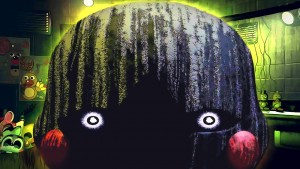 Lastly, I greatly enjoy the aesthetics of the latest game. There’s a kind of dark beauty to it. The phantom puppet is my favorite character because of its attractive design. It’s reminiscent of traditional mime makeup. I really appreciate the dash of 90s camp, especially when it comes to the arcade room and birthday party room. For me, these rooms remind me of various birthday parties I attended during the early to mid 90s.
Lastly, I greatly enjoy the aesthetics of the latest game. There’s a kind of dark beauty to it. The phantom puppet is my favorite character because of its attractive design. It’s reminiscent of traditional mime makeup. I really appreciate the dash of 90s camp, especially when it comes to the arcade room and birthday party room. For me, these rooms remind me of various birthday parties I attended during the early to mid 90s.
Finally ,what I like best about this game, and the series, is the wonderful mystery of it all. The ambiguity behind the story sparks conversations, debates, dozens of theories; the game continues in our minds long after the final moments, and all with minimal blood and gore. I don’t mind a little blood in my horror games, but like some efforts, like Slender Man, the real horror of Five Nights at Freddy’s 3 comes not from any real danger, but from the player’s paranoia, and it’s that approach that first attracted me to the series as well as what keeps me playing today.

